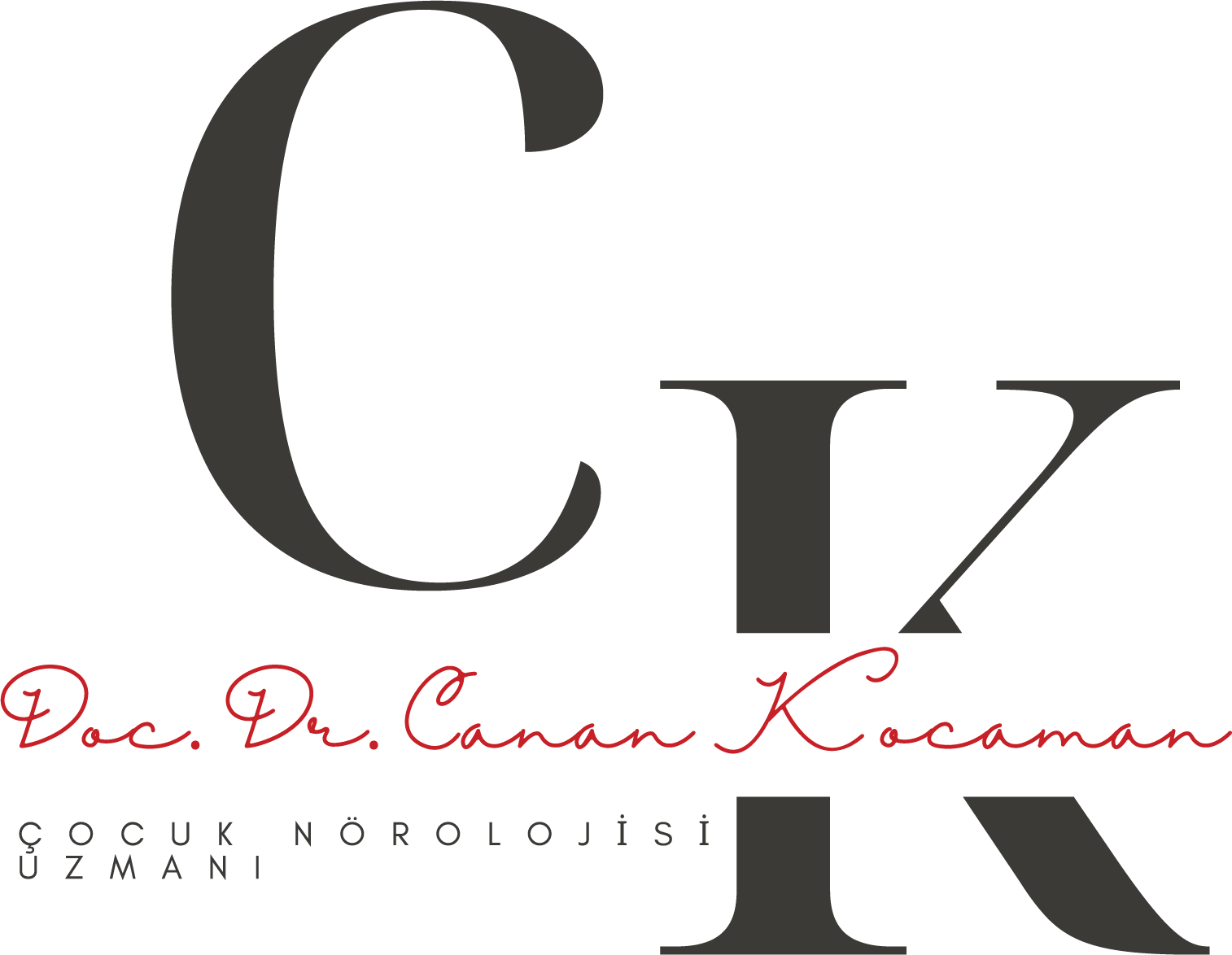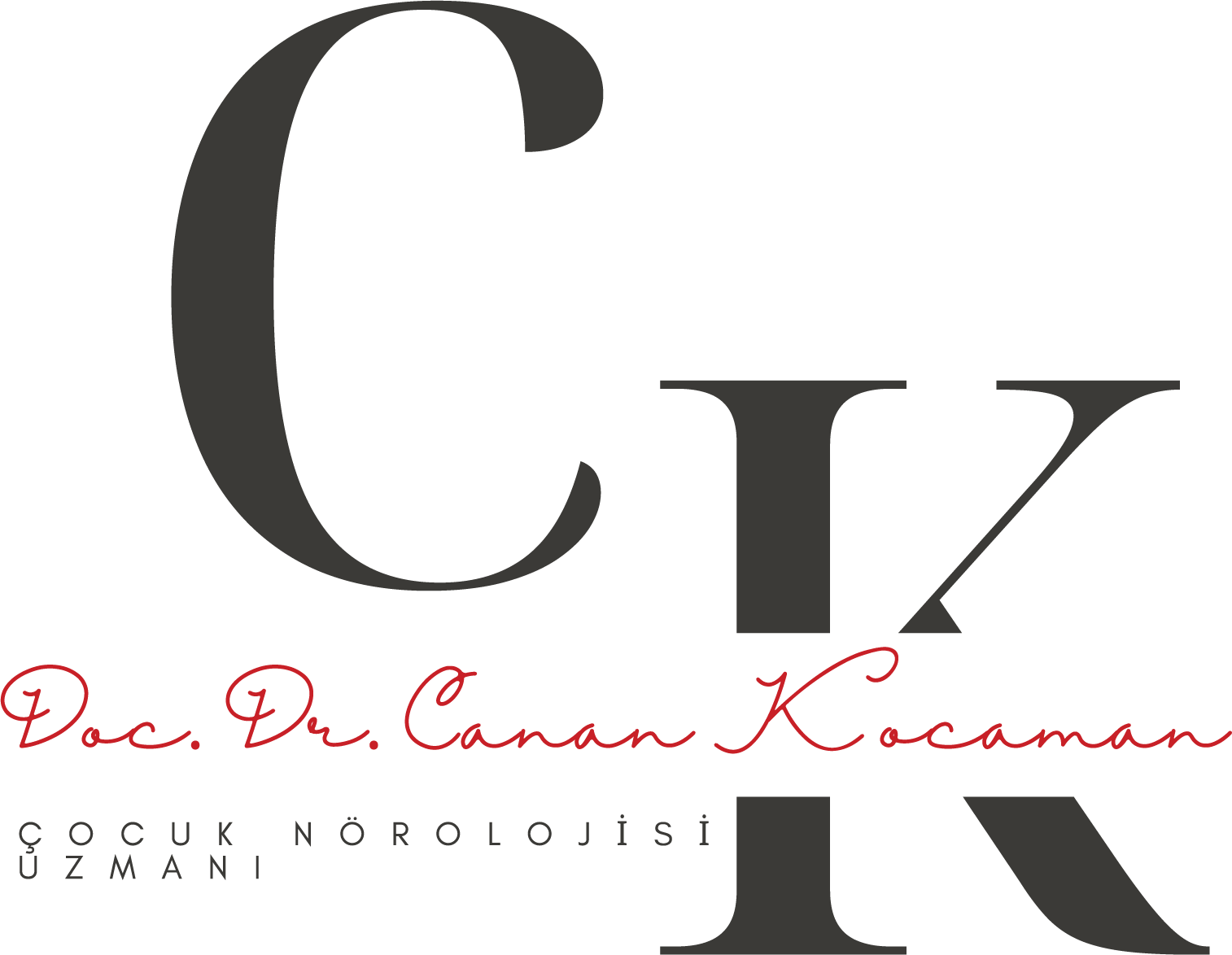Causes and Differential Diagnosis of Fainting in Childhood
Causes of short-term loss of consciousness
- Watch
- Pseudoneurosis (false seizure or seizure mimicking conditions)
- Syncope
Seizures:
- Abnormal neural discharges in the cerebral cortex.
- Clinical findings depend on the affected brain region.
- Seizures may develop as a result of a known cerebral injury or without identifiable cerebral impairment.
Convulsion
- Convulsion is a seizure accompanied by motor abnormalities.
- Seizure classification
- According to clinical and ictal and interictal EEG findings
- Partial
- Generalized
- According to etiology
- Epileptic
- Symptomatic (non-epileptic)
Partial seizure
- Seizures that completely or partially involve only one hemisphere of the brain.
- They cause motor, sensory, visual and autonomic symptoms.
- They are classified as simple partial and complex partial seizures.
Generalized seizures:
- These are seizures that involve the whole brain and cause very short or prolonged loss of consciousness.
- They may have focal onset and rapidly generalize.
- Tonic, clonic, atonic, absences, myoclonic seizures can be counted in this group.
Epilepsy:
- It is a chronic paroxysmal disorder.
- It is characterized by afebrile seizures with no known cause.
- They may occur as a result of genetic disorders, neuropathologic changes, chemical and physiologic changes.
Causes
-
- Genetic factors
- Congenital brain malformations
- Destructive brain lesions
- Tumors
- Diseases causing degenerative brain damage
Non-epileptic seizures,
- Encephalitis
- Meningitis
- Hypocalcemia
- Intracranial infections
- Hypomagnesemia
- High fever
- Hypoglycemia
- Ischemia
- Trauma
- Intoxication
- Space-occupying lesions
- Intracranial hemorrhages
- Hyponatremia
Seizure Syncope
Triggering factor Rare Usually sadness, stress
Condition Any condition Often when the patient is standing, in crowded, hot or stressful situations
Onset May develop mostly following sudden, short-term aura periods May develop following fainting, nausea, darkening of the eyes, sweating, feeling of heat
Motor activity Frequently tonic or tonic-clonic. Clonic movements often have characteristic amplitude and frequency. Automatism is observed in complex partial seizures. Mostly immobile, flaccid. Short tonic spasm, clonic, movements are uncoordinated, of short duration and low amplitude.
Seizure Syncope
Skin color Pale or red Pale
Breathing wheezing, foam comes from the mouth Slow, superficial
Incontinence Frequent Rare
Tongue biting Frequent Rare
Vomiting Rare Frequent
Self-mutilation Frequent Rare
Postictal state Frequently drowsiness, confusion or the patient falls asleep There is usually no postictal change
Loss of consciousness Usually minutes Frequently 10 seconds or slightly more
- Syncope (fainting) is a brief period of loss of consciousness due to reversible disturbances in cerebral functions.
- Important points in the story;
- Related to pre-attack
- Position (lying, sitting, standing)
- Activity (rest, exercise, change of position, urination, defecation, cough)
- Predisposing factors (crowded, hot environment, prolonged standing, fear, pain)
- Onset of attack
- Nausea, vomiting, sweating, aura, blurred vision, palpitations
- During or after an attack
- Duration of loss of consciousness, skin color, respiration, palpitations, involuntary movements (tonic, clonic, myoclonic), relationship of movements to falls, tongue biting, confusion, incontinence, trauma)
- Non-attack story
- Family history (sudden death, fainting, heart disease), metabolic disorder, history of heart disease, neurological disease, medications, characteristics of other attacks
- The most common mechanisms of occurrence;
- Decreased cardiac output
- Arterial hypotension
- Cerebral arterial obstruction
due to decreased cerebral blood flow.
- Heart diseases, non-cardiac causes, Hypoglycemia is a condition in which the blood glucose level is less than 40mg/dl.
- Symptoms due to hypoglycemia are divided into two categories;
- Symptoms related to CNS depression
- (Convulsions, mental confusion, coma, restlessness, visual disturbances, strange behavior, apnea, headache)
- Symptoms due to increased epinephrine
- (Tremor, tremor, sweating, tachycardia, weakness, anxiety, feeling of hunger)
- Presyncope symptoms do not improve with supine position.
- Hyperventilation is one of the psychogenic causes of syncope.
- Hypocapnia seen in hyperventilation syndrome may cause dizziness and sometimes syncope.
- CO2 accumulated as a result of slowed cerebral circulation causes vasodilation and increases local blood flow.
- Lack of CO2, on the other hand, causes narrowing of the cerebral arteries, leading to ischemia symptoms.
- Findings suggestive of hyperventilation;
- Paresthesia
- Lethargy
- Dizziness
- Chills
- Tetany (rare)
- Decreased venous return
- Return of a normal amount of venous blood to the heart is necessary to maintain normal left ventricular output and systemic pressure in balance.
- Right atrial pressure 5-10 mmHg lower than venules allows venous return.
- Increased intrathoracic pressure (Valsavra maneuver, cough, breath holding, tracheal obstruction)
- Decreased venous tone
- In cases of decreased intravascular volume (secondary to hemorrhage and dehydration), syncope occurs if venous return is impaired enough to critically reduce the flow rate.
- Causes due to cerebrovascular occlusion
- Symptoms
- Feeling of fullness at the beginning
- Powerlessness
- Dizziness
- It is very rare in children.
- In diseases due to cerebrovascular occlusion, it is usually
- Hemiparesis
- Temporary blindness
- Diplopia
- Speech impairment
- Confusion
- Headache
short-term neurological problems such as reflex and situational syncope are observed.
Reflex and Situational Syncope
Reflex syncope
- Reflex syncope is a type of syncope that is provoked by certain factors.
- It is often confused with breath-holding episodes.
Situational syncope:
- Syncope that occurs after coughing, defecation, micturation, lifting a load is defined as situational syncope.
- It is more common in adults than in children.
Orthostatic Hypotension
When a person is standing, certain mechanisms are activated to maintain cardiac output and cerebral arterial blood pressure at an adequate level;
- Mechanical pumping effect of skeletal muscles in the venous pathway
- One-way opening venous valves
- Baroreflex-mediated arterial contractions
- Cerebral autoregulation
- Reflex sinus tachycardia
- In orthostatic hypotension, the normal adrenergic vasoconstriction mechanism in arterioles and veins during standing is deficient or inadequate, resulting in hypotension without reflex tachycardia of the heart.
- The person only feels dizziness as a prodromal symptom.
- Prolonged bed rest
- Standing for long periods of time
- Conditions that reduce blood volume (bleeding, dehydration)
There are precipitating factors such as
- Drugs that disrupt sympathetic vasomotor response (Ca channel blockers, antihypertensive drugs, vasodilators)
- Diuretics
They worsen orthostatic hypotension.
- In patients thought to have orthostatic hypotension, blood pressure should be measured while sitting and standing.
- Tilt test is positive in patients with orthostatic hypotension, but autonomic nervous system findings such as pallor, diaphoresis and hyperventilation seen in vasovagal syncope are not observed.
- Sympathomimetic amines
- Corticosteroids
- is not useful for the control of orthostatic blood pressure.
Vasovagal Syncope
Physiopathology:
- Normally, while standing, venous return decreases, pulse rate increases and cardiac output is maintained.
- In susceptible individuals, sympathetic activity that increases heart rate causes vagal activation by reflex mechanism.
- As a result, pulse rate decreases, cerebral perfusion deteriorates and loss of consciousness occurs.
- Trigger factors
- Anxiety
- Hunger
- Hot and humid environment
- Crowded environments
- Standing for long periods of time and without movement
- Fear
- Agri
- Blood collection
- Seeing blood
- It is characterized by prodromal symptoms and ends in about one minute.
- Prodromal symptoms
- Imbalance
- Eye darkening
- Palpitations
- Pallor
- Nausea
- Diaphoresis
- Hyperventilation
Diagnostic tests;
- ECG
- EEG
- Glucose tolerance test
- Echocardiography
- BT
- MR
- Tilt test
It is usually effective to lay the fainting patient on a flat surface and raise the legs.
Prevention
- Avoidance of precipitating factors
- Medicines
- Pseudoephedrine - prevents venous ponding and hypotension
- Metoprolol-Negative inotropic effect
- Fludrocortisone-Volume expansion
- Disopramide-Anticolinergic, Negative inotropic, Peripheral vasoconstrictor
- Scopolamine-reduces vagal tone
Conversion disorder;
- Occurs mainly due to psychological factors or stress.
- The onset of symptoms is sudden and typically recurs within two weeks.
- It is most common in adolescent periods.
- It is the most common somatoform disorder in children.
Diagnostic criteria (DMS-4);
- No underlying neurological or organic disorder
- Stress factors play a role before the onset of symptoms or deficits
- Symptoms or deficits are not deliberately induced or faked
- Causes clinically significant discomfort or impairment in social and work life




